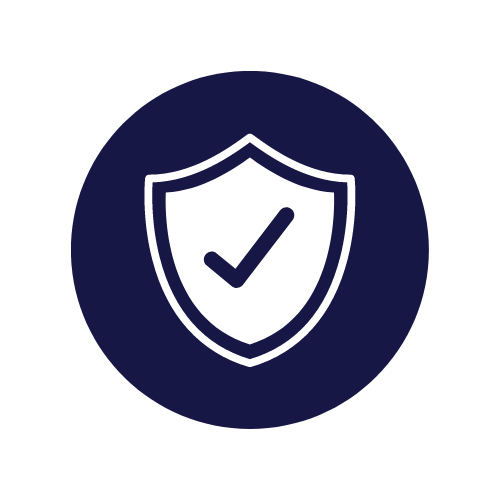How Long Does it Take to Detox From Drugs?

By The Recovery Village
Medical Reviewer Dr. Jessica Pyhtila, PharmD | Editor Abby Doty
Last Updated: February 16, 2024
Editorial Policy | Research Policy
Drug detox can take days, weeks or months depending on the substance, the dose you take, the frequency you take the substance, your physical health and more.
If you struggle with substance abuse, the thought of quitting can be scary. You may not know what to expect or how quickly your body will adapt to detox, the process of cleansing your system of the substance.
Fortunately, there has been much research on how long it takes to detox from drugs and alcohol. This can give you a good idea of what to expect when you decide to embark on a substance-free life.
Alcohol Detox
Alcohol detox can be difficult and dangerous to manage on your own. This is especially true if you have previously gone through alcohol withdrawal, as this can cause your next withdrawal to be worse than before. It is always safest to detox under medical supervision in a medical detox facility.
When undergoing alcohol detox, doctors and nurses will repeatedly check in on you and ask you how you are feeling. These questions correspond to and are scored on the Clinical Institute Withdrawal Assessment (CIWA) questionnaire. The higher your CIWA score, the more at risk you are for alcohol withdrawal symptoms. As medically appropriate, your medical team can treat you to prevent withdrawal symptoms and help you detox from alcohol safely. The first-line treatment for alcohol withdrawal is long-acting benzodiazepines like diazepam (Valium) or chlordiazepoxide (Librium).
Alcohol Detox Timeline
A typical alcohol detox timeline is as follows:
- Six to eight hours after the last drink: Mild withdrawal symptoms can start, including tremor, anxiety and nausea.
- 12 to 24 hours after the last drink: Symptoms can intensify and may include tremors, agitation, sleep problems and hallucinations.
- 12 to 48 hours after the last drink: Symptoms may begin to intensify, and seizures may occur.
- Two to five days after the last drink: During this time frame, you are at the highest risk for delirium tremens, the most serious complication of alcohol withdrawal. Symptoms may include worsened confusion, agitation, fever, rapid heartbeat, high blood pressure, sweating, anxiety and insomnia.
- One to six months after the last drink: Although acute withdrawal symptoms will have gradually worn off, anxiety and sleep problems may persist.
Benzodiazepine Detox
Like alcohol, benzodiazepines — or “benzos” — are central nervous system depressants. Suddenly stopping them can cause a resurgence of excitability in the brain that can be dangerous and may lead to withdrawal effects like seizures. For this reason, it is important to only undergo benzo detox under the care of a medical provider.
Typically, benzo detox involves a taper, which is a slow reduction in the benzo dose over time. A taper helps prevent or reduce withdrawal symptoms by getting your body used to progressively lower doses of the benzo. Generally, if you are taking a short-acting benzo, your doctor will first convert you to a long-acting benzo like diazepam (Valium) to help ease the benzo out of your system and avoid the heightened effects from short-acting drugs.
Benzos include:
- Alprazolam (Xanax)
- Clonazepam (Klonopin)
- Diazepam (Valium)
- Lorazepam (Ativan)
- Chlordiazepoxide (Librium)
- Midazolam (Nayzilam)
- Temazepam (Restoril)
- Triazolam (Halcion)
Benzodiazepine Detox Timeline
A typical benzo detox timeline for a short-acting benzo like Ativan or Xanax is as follows:
- Six to eight hours after the last dose: Symptoms of insomnia and anxiety can start, especially if you take a shorter-acting benzo like Ativan or Xanax.
- 10 to 14 days after the last dose: More severe withdrawal symptoms can wax and wane over time, improving only to worsen and then improve again.
- Over the long term: Withdrawal symptoms gradually subside.
For longer-acting benzos like Valium, a sample detox timeline is as follows:
- 24 to 48 hours after the last dose: Withdrawal symptoms like insomnia and anxiety can begin.
- Weeks or months after the last dose: More severe withdrawal symptoms can wax and wane over time.
- Over the long term: Withdrawal symptoms gradually subside.
Stimulant Detox
Stimulant detox is most safely conducted under around-the-clock care like in a medical detox facility. This is because stimulant withdrawal can sometimes cause symptoms like hallucinations and psychosis, which can make a person dangerous to themselves or others. Because these symptoms can come on suddenly and may be unpredictable, it’s important to be under close monitoring while undergoing a stimulant detox.
Stimulants include:
- Cocaine
- Methamphetamine (meth)
- Amphetamines
(like Adderall) - Lisdexamfetamine
(Vyvanse) - Methylphenidate (Concerta, Ritalin)
- Dexmethylphenidate (Focalin)
- Armodafinil (Nuvigil)
- Modafinil (Provigil)
Stimulant Detox Timeline
A sample stimulant detox timeline is as follows:
- Within 24 hours of the last dose: This is the onset of withdrawal symptoms.
- Within three to five days of the last dose: Withdrawal symptoms begin to worsen.
- Within one to two weeks of the last dose: Symptoms gradually start to improve.
- Within the first few months after the last dose: Although many withdrawal symptoms have improved, some cognitive activities like problem solving and attention may still be impacted.
Opioid Detox
Opioid detox can be notoriously hard for people to manage on their own without medical help. Although opioid detox is uncomfortable, the biggest danger of opioid detox lies in untreated cravings that increase the risk of relapse. When you are addicted to opioids, your body becomes tolerant to the dose of opioids you take on a regular basis. If you quit or cut back, even for a short time, your body’s tolerance can decrease. This means that if you relapse and take a dose you previously may have used, you may accidentally overdose because your body is no longer used to that dose. Opioid overdoses are often fatal without emergency care.
Many doctors will use medication-assisted treatment (MAT) as medically appropriate to prevent cravings and reduce the risk of overdose. In MAT, you are started on a long-acting opioid like methadone or buprenorphine. These drugs are designed to prevent cravings and reduce overdose risk if you slip up. For this reason, MAT is considered to be the gold standard treatment for opioid use disorder.
Opioids include:
- Codeine
- Fentanyl (Duragesic)
- Heroin
- Oxycodone (OxyContin)
- Morphine
- Hydrocodone
- Hydromorphone (Dilaudid)
- Tramadol (Ultram)
Short-Acting Opioid Detox Timeline
Generally, short-acting opioids have a quicker onset and lead to a quicker high than long-acting opioids, leading to increased abuse potential. For this reason, it is more common to undergo detox from short-acting opioids versus long-acting opioids. A typical detox timeline for short-acting opioids is as follows:
- Eight to 12 hours after the last dose is taken: Withdrawal symptoms begin and can last one to three days.
- 48 to 72 hours after the last dose is taken: For some people, withdrawal symptoms may worsen during this time frame before improving.
- Seven to 10 days after the last dose is taken: Withdrawal symptoms resolve.
Barbiturates & Sleeping Pill Detox
Barbiturates and sedative-hypnotic sleeping pills are central nervous system depressants that act similarly to benzos. As with benzos, stopping them cold turkey can be dangerous, leading to excitability in the brain that causes withdrawal symptoms like seizures. As a result, you should only complete a sleeping pill detox while under a doctor’s care.
Similar to benzos, a sleeping pill detox usually involves a taper to prevent withdrawal symptoms. Often, the person on a sleeping pill is converted to a long-acting benzo like diazepam (Valium) to help ease them off the medication and avoid withdrawal effects.
Barbiturates and sedative-hypnotic sleeping pills include:
- Butalbital
- Eszopiclone (Lunesta)
- Phenobarbital
- Primidone (Mysoline)
- Ramelteon (Rozerem)
- Suvorexant (Belsomra)
- Zaleplon
- Zolpidem (Ambien)
Barbiturate & Sleeping Pill Detox Timeline
The detox timeline for sleeping pills and barbiturates is similar to that of benzos:
- 24 to 48 hours after the last dose: Withdrawal symptoms like insomnia and anxiety may begin.
- Weeks to months after the last dose: More severe withdrawal symptoms can occur. These may wax and wane over time.
- Over the long term: Withdrawal symptoms gradually diminish.
Hallucinogen Detox
Many hallucinogens exist and vary widely in terms of needs and expectations in detox. Some hallucinogens, like phencyclidine (PCP), are known to cause withdrawal symptoms that need to be monitored by a medical professional. Other hallucinogens, like lysergic acid diethylamide (LSD), are not linked to withdrawal symptoms.
Hallucinogens and dissociative drugs include many different, often unrelated, substances, including:
- Ayahuasca
- Ketamine
- Lysergic acid diethylamide (LSD)
- Peyote (mescaline)
- Phencyclidine (PCP)
- Psilocybin (shrooms)
- 251-NBOMe
- DMT
(N,N-dimethyltryptamine) - Salvia
Hallucinogen Detox Timeline
Little data exist about hallucinogen detox timelines. This is partly because most hallucinogens are Schedule I controlled substances with no recognized medical use. For this reason, few studies about their withdrawal effects have been conducted. Detox timelines for hallucinogens are, therefore, not available to help set expectations about what occurs when you stop taking the substance.
Marijuana Detox
Marijuana detox is typically mild compared to detox from other substances. However, it can still be difficult for the person to overcome, especially if they have underlying physical or mental health issues. For this reason, it is important to seek care if needed for withdrawal symptoms and to set expectations regarding your marijuana detox timeline.
Marijuana Detox Timeline
A typical marijuana detox timeline is as follows:
- One to three days after last use: Withdrawal symptoms start.
- Two to six days after last use: Withdrawal symptoms peak during this time.
- Four to 14 days after last use: Withdrawal symptoms taper off during this time, although some people may have certain symptoms like insomnia or strange dreams for 45 days or more following the last use.
How Long Does a Detox Program Take?
No such thing as a one-size-fits-all detox program exists. Although a person may be able to detox from some substances within a week or so, this can depend on a variety of factors. Some detox programs — like a high-dose benzodiazepine detox — may take weeks or months, while other detox programs may take a much shorter period of time, generally around a week or two.
Factors that Affect How Long It Takes to Detox From Drugs
Many factors can impact how long it takes to detox from drugs. These include:
- The dose you take: Detoxing from a higher dose of a substance may take longer than detoxing from a smaller dose.
- How often you take the drug: The more often you take the drug, the more physically dependent your body may be on the substance. This translates to a more intense withdrawal experience that may require a longer detox.
- If you take any additional substances: Polysubstance abuse can often be more complex to treat than single-substance abuse. This can mean the detox period is longer.
- If you have been through detox before: In some cases, previous detox attempts can mean you may be at higher risk of complications during withdrawal. This is, for example, the case for alcohol withdrawal and may require a longer detox period.
- If you have any mental health problems: Mental health problems can complicate the detox process, meaning a longer detox.
- Your overall physical health: If you are in good physical health, your detox process may be simpler than if you are in poor physical health or have underlying medical or nutritional problems.
Drug & Alcohol Detox in New Jersey
If you struggle with substance abuse, help is here. Quitting doesn’t need to be overwhelming, and our medical detox program can help you every step of the way. The first step in overcoming substance abuse is drug detox: cleansing your body of the substance while under the care of a medical professional. We can provide around-the-clock monitoring in our state-of-the-art addiction treatment facility, where our team of doctors and nurses can treat and reduce your withdrawal symptoms as they arise. Once detox is complete, a personalized treatment plan is developed to address the factors that led to your substance abuse and the tools you’ll need to stay sober.
You’re not alone when it comes to quitting substance use. Contact The Recovery Village Cherry Hill at Cooper today to learn how we can help.
Sources
Becker, Howard C. “Kindling in Alcohol Withdrawal.” Alcohol Health & Research World, 1998. Accessed June 5, 2022.
PsychDB. “Alcohol Withdrawal.” Accessed June 5, 2022.
World Health Organization. “Clinical Guidelines for Withdrawal Manag[…]e in Closed Settings.” 2009. Accessed June 5, 2022.
National Center for PTSD. “Effective Treatments for PTSD: Helping P[…]from Benzodiazepines.” January 2015. Accessed June 5, 2022.
PsychDB. “Sedative, Hypnotic, or Anxiolytic (Benzo[…]iazepine) Withdrawal.” Accessed June 5, 2022.
Substance Abuse and Mental Health Services Administration. “Protracted Withdrawal.” July 2010. Accessed June 5, 2022.
Pétursson, H. “The benzodiazepine withdrawal syndrome.” Addiction, November 1994. Accessed June 5, 2022.
American Society of Addiction Medicine. “National Practice Guideline for the Trea[…] Opioid Use Disorder.” December 18, 2019. Accessed June 5, 2022.
Suddock, Jolee T. & Cain, Matthew D. “Barbiturate Toxicity.” StatPearls, July 5, 2021. Accessed June 5, 2022.
Spielewoy, Cecile & Markou, Athina. “Withdrawal from chronic phencyclidine tr[…]rain reward function.” Neuropsychopharmacology, June 2003. Accessed June 5, 2022.
Substance Abuse and Mental Health Services Administration. “Physical Detoxification Services for Wit[…] Specific Substances.” Treatment Improvement Protocol (TIP) Series, No. 45. Accessed June 5, 2022.
National Institute on Drug Abuse. “Hallucinogens.” April 2019. Accessed June 5, 2022.
Budney, Alan J.; Moore, Brent A.; Vandrey, Ryan G.; & Hughes, John R. “The time course and significance of cannabis withdrawal.” Journal of Abnormal Psychology, 2003. Accessed June 5, 2022.

 Insurance
Insurance About Us
About Us Our Facility
Our Facility Admissions
Admissions Programs
Programs Medical Detox
Medical Detox Inpatient Rehab
Inpatient Rehab Aftercare & Recovery
Aftercare & Recovery



